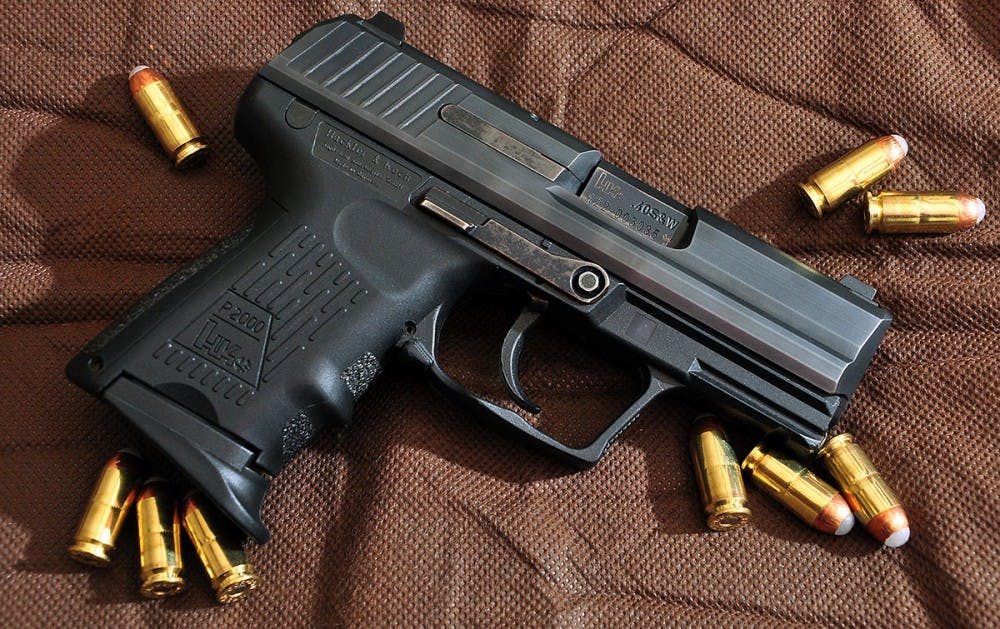This Wednesday, March 14, students across the nation and here at the University will participate in the National Walkout Day in protest of gun violence. The specific demands of the protesters are numerous and variable depending on location, but for the most part they all include some measure of gun control, in an attempt to reduce the number of mass shootings in this country. Historically speaking, however, gun control has proven to be largely ineffective in the United States, and it is unlikely that similar legislation will be effective or feasible in curbing our country’s homicide rate.
One of the most significant legislative pushes being made by gun control advocates is an assault weapons ban. Unbeknownst to many, however, a similar piece of legislation has already been successfully passed in our nation — the Federal Assault Weapons Ban of 1994, which lasted for a decade before its expiration. Studies by the National Institute of Justice and the Department of Justice showed that the ban had little to no effect in reducing violent crime, which could be why it was never renewed. This inefficacy probably has to do with the fact that assault weapons only account for about 1 to 2 percent of gun homicides in our country. There is no reason to believe that recreating this failed piece of legislation would lead to different results.
Many moderate gun activists also advocate for “common sense gun control,” including background checks and waiting periods for some varieties of firearms just to name a few, all of which have the goal of minimizing the number of guns in the public. However, there is little precedent to suggest the effectiveness of such policies. Studies have shown that there is practically no correlation whatsoever between gun ownership rates and crime rates between different states. In fact, many areas with incredibly strict gun laws like Chicago, Ill. or Baltimore, Md. still have some of the highest murder rates in the country. In addition, numerous states like Massachusetts and Connecticut have seen their homicide rates increase following the implementation of comprehensive gun control.
This may seem counterintuitive at first, but it makes sense when you consider the obvious truth that criminals inherently do not follow laws. This is evidenced by the fact that over 98 percent of mass shootings occur in gun-free zones — such as schools or churches — as opposed to areas with other armed citizens. By passing such legislation, the government is simply preventing law-abiding citizens from defending themselves, while criminals still have a myriad of illegal and unpreventable ways to obtain firearms. In addition, the advent of 3D printed firearms and other technologies in the future will also make it even easier for criminals to obtain weapons, making it even more important that citizens have the means to defend themselves.
Some more extreme gun control advocates back a full-fledged repeal of the Second Amendment, along with mass firearm confiscation, similar to nations like Australia. However, this is infeasible for the simple fact that there are more than 300 million firearms in circulation in our nation, belonging to over 100 million owners, as well as potentially millions more that were obtained illegally. The gun buyback program implemented in Australia in 1996 cost half a billion dollars and was only successful in removing about 600,000 firearms, which serves as an example of the potential outcome of such an implementation in our country. That is without mentioning the estimated tens of billions of rounds of ammunition produced in America every year which would need to be seized as well, pushing costs even higher. Moreover, Australia’s gun buyback did little to reduce its overall homicide rate.
So if assault weapons bans, comprehensive gun control and full-fledged gun bans are all infeasible and ineffective, what then is the solution? Well, in order for a solution to be applied there must be a problem in the first place, and nationwide trends prove this isn’t the case. As our police forces have become increasingly better-equipped over the past few decades, and as the gun ownership rate — known as firearms per capita — has increased, our country’s gun homicide rate has drastically decreased. While tragic mass shootings do occur, it is important to recognize that these events are not necessarily indicative of widespread trends, nor can they be prevented with gun control legislation. While their intentions are certainly pure, gun control advocates must learn to use their brains instead of their hearts if they hope to enact meaningful change.
Milan Bharadwaj is an Opinion columnist for The Cavalier Daily. He can be reached at opinion@cavalierdaily.com.








